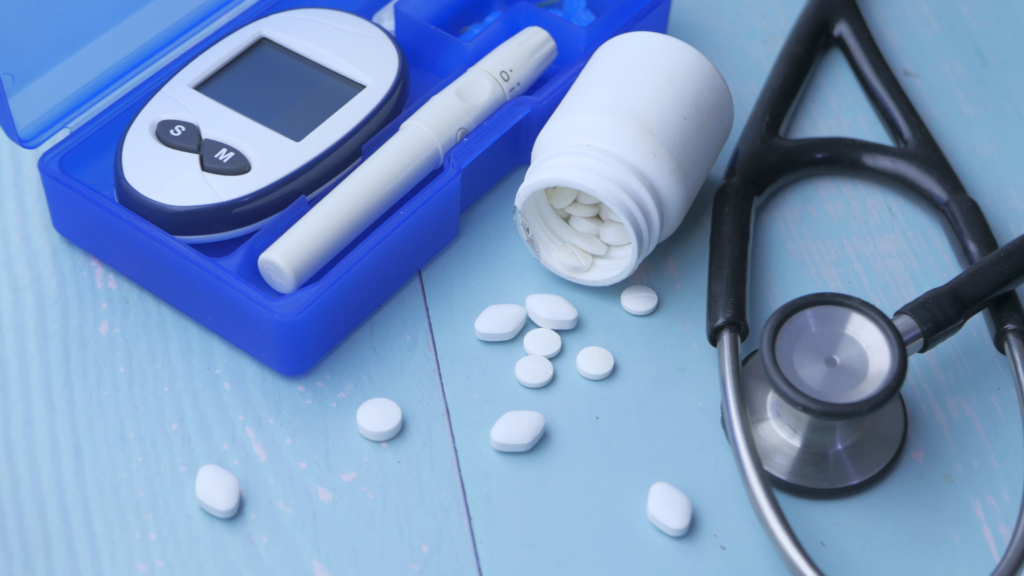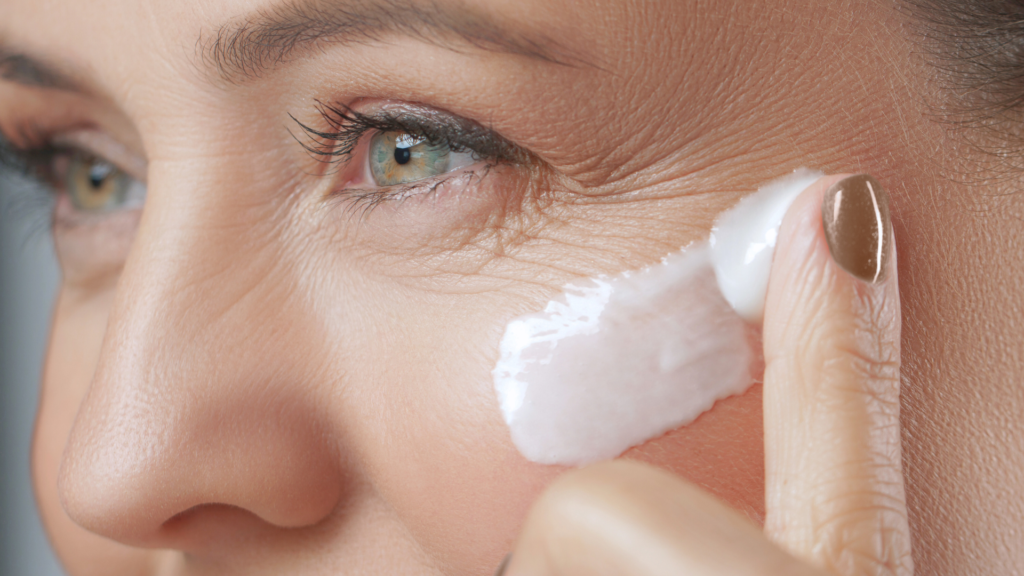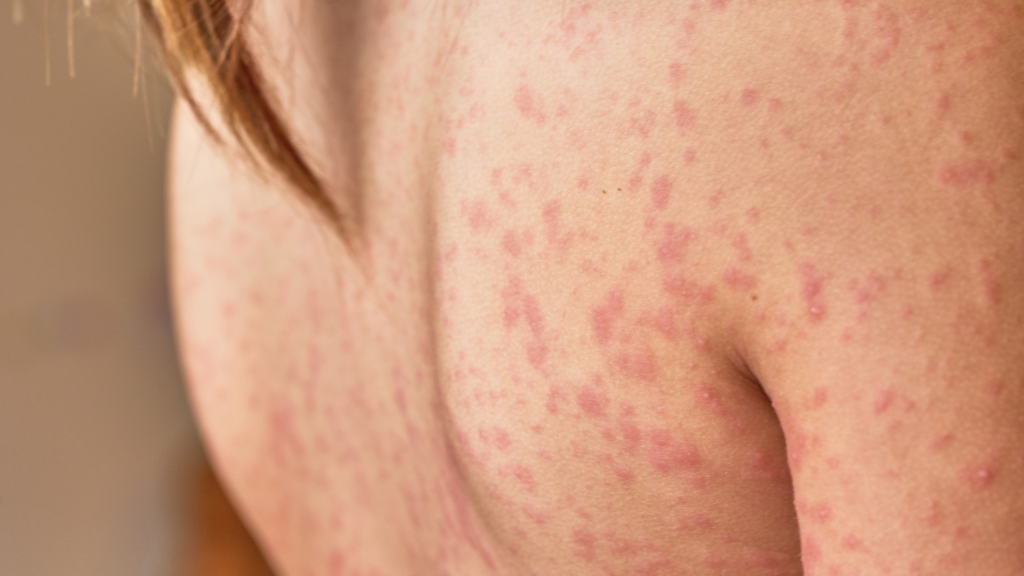Can a Healthy Lifestyle Counteract the Effect of High Blood Sugar on Brain Aging?

In a landscape where the conversation around aging and wellness continues to evolve, a groundbreaking study throws light on the profound impact of high blood sugar on the brain—and how a healthy lifestyle can mitigate these effects. 🪄💫 The study delved into the brain ages of over 13,500 individuals diagnosed with prediabetes and approximately 1,100 individuals with diabetes. The findings were stark: on average, the brain ages of participants in both groups were notably older than their chronological ages—half a year older in those with prediabetes and more than two years older in those living with diabetes. Here’s the Kicker: Remarkably, the study unveiled that embracing a healthy lifestyle could significantly bridge the gap between diabetes and brain age, reducing it by an astonishing 1.86 years. This revelation invites an urgent dialogue on what constitutes a “healthy lifestyle” and how it can serve as a linchpin in our battle against the accelerated aging of the brain due to high blood sugar levels. Decoding a Healthy Lifestyle For the curious and the committed, the study outlines a healthy lifestyle as one that eschews smoking and heavy drinking while promoting high levels of physical activity. It’s a triad of habits that, when adopted, hold the potential not only to improve overall physical health but also to safeguard cognitive functions against the detrimental effects of diabetes and prediabetes. Your Diagnosis Is Not Your Destiny This pioneering study sends a powerful message: Regardless of whether you’re navigating life with prediabetes, diabetes, or striving to prevent these conditions, your diagnosis does not define your destiny. The findings underscore a dynamic yet often overlooked truth—we possess the intrinsic power to make choices that profoundly influence our health trajectory. Embracing a lifestyle that prioritizes movement, moderation, and mindfulness can not only lessen the legacy of high blood sugar on our brain’s age but also equip us to live fuller, more vibrant lives. In the face of these compelling insights, the takeaway is clear: while we may not have control over every aspect of our health, the choices we make daily can significantly alter the course of our wellness journey. Ready to take a proactive step towards mitigating the impacts of high blood sugar on your brain health and aging? Book a call today to start your journey to a more vital and healthier you.
Is Regular Exercise the Secret to Healthier Belly Fat?

Emerging studies bring to light an encouraging discovery – regular exercise influences how and where our bodies store fat, steering metabolism towards a healthier disposition. But what does this mean for the everyday person, especially those battling obesity or carrying extra weight? A groundbreaking study has found that individuals with obesity or overweight who engaged in regular exercise (four times per week) over an extended period (two-plus years) possessed what researchers are calling “healthier belly fat” compared to those who led a more sedentary lifestyle. Understanding “Healthier” Belly Fat The term “healthier belly fat” might seem like an oxymoron at first glance, but it’s rooted in significant structural and biological differences noted in the study. The belly fat from individuals who exercised regularly exhibited an increase in blood vessels, mitochondria, and proteins that favor fat storage beneath the skin’s surface—known as subcutaneous fat—over visceral fat, which accumulates deeper in the body around organs. Why the Location of Fat Matters The positioning of fat within our bodies is a critical factor in determining its impact on our health. It turns out that subcutaneous fat is more metabolically benign and carries fewer health risks compared to visceral fat. The latter is often associated with numerous health issues, including heart disease, diabetes, and even certain cancers. This pivot in understanding underscores an important message: Where your body decides to store fat is as crucial, if not more so, than the amount of fat itself. Exercise: Programming the Body for Safer Fat Storage Though the study in question focused on individuals with obesity or overweight, the implications extend across the board. It suggests that through consistent exercise, our bodies can ‘learn’ to store fat in less hazardous ways. It’s a revelation that brings hope and underscores the long-term benefits of regular physical activity. The transition towards healthier belly fat storage doesn’t happen overnight, and it’s this slow, gradual process that often leads to frustration for many in their fitness journeys. The Takeaway: Patience and Perseverance The immediate visual transformations that many hope for from exercise may not always be apparent. However, beneath the surface, pivotal shifts in our metabolic health are unfolding. These changes play a significant role in safeguarding our future well-being, emphasizing the importance of patience and persistence in our exercise routines. So, while the scale might not reflect dramatic shifts immediately, remember that with each workout, you’re nudging your body towards a healthier state of being. Your future self will surely extend a heartfelt thank you for the commitment you make today. Eager to transform the way your body stores fat and propel yourself towards a healthier future? Book a call today to start your journey to a more vital and healthier you.
Can Nutrition Combat the Signs of Aging Skin?

When you catch your reflection and notice that the fine lines, wrinkles, and signs of sagging are becoming less evident, it’s a testament to the power of nutrition in the battle against aging. The journey to youthful skin is not about finding an overnight miracle but about understanding and utilizing the right nutrients that have a significant impact on how your skin matures. Let’s unravel the essential cornerstones of nutrition that contribute to healthier, more vibrant skin with age. The Must-Have Foundations for Age-Defying Skin The Targeted Nutrient Supplements Once you’ve laid the foundation with a balanced diet, certain supplements can further enhance your skin’s defense mechanisms against age: Integrative Wisdom for Tailored Solutions It’s important to understand that jumping straight into supplements without a foundational skin-healthy diet likely won’t yield the dramatic results you’re seeking. Good nutrition is synergistic; the right foods enhance the effects of supplements, and vice versa. For those ready to embrace a personalized approach to maintaining youthful skin, considering your unique biochemistry, goals, and vulnerabilities is crucial. Our functional methodology is designed for individuals who are serious about taking control of their skin health and age with grace. Are you eager to learn more and start on the path to seemingly ageless skin through nutrition? Book a call today to start your journey to a more vital and healthier you.
Can Nutrition Combat the Signs of Aging Skin?

When you catch your reflection and notice that the fine lines, wrinkles, and signs of sagging are becoming less evident, it’s a testament to the power of nutrition in the battle against aging. The journey to youthful skin is not about finding an overnight miracle but about understanding and utilizing the right nutrients that have a significant impact on how your skin matures. Let’s unravel the essential cornerstones of nutrition that contribute to healthier, more vibrant skin with age. The Must-Have Foundations for Age-Defying Skin The Targeted Nutrient Supplements Once you’ve laid the foundation with a balanced diet, certain supplements can further enhance your skin’s defense mechanisms against age: Integrative Wisdom for Tailored Solutions It’s important to understand that jumping straight into supplements without a foundational skin-healthy diet likely won’t yield the dramatic results you’re seeking. Good nutrition is synergistic; the right foods enhance the effects of supplements, and vice versa. For those ready to embrace a personalized approach to maintain youthful skin, considering your unique biochemistry, goals, and vulnerabilities is crucial. Our functional methodology is designed for individuals who are serious about taking control of their skin health and age with grace. Are you eager to learn more and start on the path to seemingly ageless skin through nutrition? Book a call today to start your journey to a more vital and healthier you.
How Can You Combat Breakouts, Rashes, and Irritated Skin?

In our daily lives, experiencing skin issues such as breakouts, rashes, and irritation is common. However, the main culprit behind these frustrating skin conditions is often inflammation. To tackle these issues effectively, addressing inflammation from the inside out is crucial. Here’s how my clients achieve healthier skin through simple, yet effective strategies. Omega-3 Fatty Acids Omega-3s are essential fats found in fish, nuts, and seeds. These fats are crucial in reducing inflammation throughout the body, including the skin, making them top allies in your fight against skin problems. Quality Sleep Never underestimate the power of a good night’s sleep! Disrupted or insufficient sleep can increase the body’s inflammatory markers. Ensuring you get enough rest helps your skin to repair and regenerate, reducing the likelihood of skin issues. Regular Movement Exercise isn’t just great for your waistline; it also boosts your metabolic health, which in turn helps to reduce inflammation. Whether it’s a brisk walk, yoga, or more intense activities, regular movement is beneficial for overall skin health. Hydration Water plays a pivotal role in maintaining skin hydration. Since skin is approximately 64% water, staying adequately hydrated ensures your skin remains less vulnerable to dryness and irritation. Colorful Foods Incorporating a variety of colorful foods in your diet isn’t only pleasing to the eye but also to your skin! These foods are rich in antioxidants, which combat inflammation and can help protect the skin from various ailments. Probiotics Supporting your gut health with probiotics can directly influence your skin’s health, thanks to the gut-skin axis. A healthy microbiome reduces inflammation and improves skin conditions such as eczema and acne. By integrating these strategies into daily routines, my clients see significant improvements in their skin. It’s not only about treatments from the outside, but also nourishing your body from within. Ready to take your own steps towards better skin and overall health? Book a call today to start your journey to a more vital and healthier you.
Are You Missing Out on These 5 Essential Skin Health Facts?

In the quest for glowing, flawless skin, you’ve probably encountered countless tips and tricks – from the latest skincare fads to age-old remedies. But amidst this sea of beauty advice, there are crucial facts about skin health that often go unnoticed, even by health professionals. For clear and healthy skin, read on – and whatever you do, don’t skip fact #3! Gut Health Reflects On Your Skin Did you know that breakouts, rashes, irritations, and redness are not just skin-deep issues but are actually outward signs of internal inflammation, primarily stemming from the gut? That’s right! Your skin health is a reflection of your gut health. Tip: Support both your gut and skin by incorporating more fiber, probiotics, and healthy fats into your diet. Sugar Is Not So Sweet For Your Skin While a sugary treat may feel comforting, excess sugar can have a bittersweet effect on your skin. Sugar accelerates the aging process through glycation – a reaction where sugar molecules adhere to collagen in the skin, leading to wrinkles and sagging skin. Tip: Enjoy sweets as occasional indulgences to keep your skin youthful and radiant. Your Diet Can Shield You From The Sun Though sunscreen remains unbeatable for sun protection, certain dietary choices can offer an additional layer of defense. Nutrients such as beta-carotene and lycopene get stored in the skin and help mitigate UV damage. Tip: Embrace a colorful diet full of diverse fruits and vegetables to bolster your skin’s natural sun defense. Don’t Skimp On Sleep Never underestimate the power of beauty sleep! When you’re in the land of dreams, your body springs into action, releasing growth hormones and producing collagen, which are essential for reducing fine lines, bolstering skin strength, and reducing sagging. Tip: Prioritizing sleep is not just wise; it’s a necessity for glowing, vibrant skin. Be Wary Of Skincare Chemicals Many skincare products contain “forever chemicals” – compounds that persist in the environment and our bodies, potentially causing harm over time. These substances can seep into your bloodstream and wreak havoc. Tip: Opt for non-toxic skincare products by reading labels and choosing products wisely to keep both your skin and the environment safe. Understanding that skin health is more than skin-deep is paramount. Expensive creams and serums might promise immediate results, but the secret to truly healthy skin lies in nurturing your overall health. Start your journey towards not just a beautiful, but a healthier version of you today. Book a call today to start your journey to a more vital and healthier you.
Can Increased Flexibility in Middle Age Really Extend Your Lifespan?

As we journey through life, especially during middle age, we often ponder the key factors that contribute to longevity. While diet, exercise, and mental health are frequently discussed, a recent study brings another crucial element to the forefront: flexibility. It turns out that being more flexible in middle age can significantly lower your odds of death in the coming years. But how much truth is there to this finding? Let’s delve into the details. The Latest Findings A new study has highlighted that individuals between the ages of 46 and 65 who maintain greater flexibility enjoy a longer life. Conducted over several decades, this study assessed over 3,100 men and women using a unique measurement called the “Flexindex,” which evaluates flexibility across multiple joints in the body. The results were both enlightening and compelling. From 1994 to 2022, researchers tracked the participants, and the findings were striking. Men exhibiting the least flexibility were nearly twice as likely to die during the follow-up period compared to their more flexible counterparts. Even more alarming was the statistic for women: those with the least flexibility were almost five times more likely to succumb than those boasting higher flexibility levels. The implications of these findings are significant, suggesting that enhancing our flexibility could play a pivotal role in promoting longevity and overall health. The Connection Between Flexibility and Longevity Why does flexibility matter so much? The answer may lie in how our bodies function as we age. Flexibility is essential for maintaining joint health and mobility, two critical factors that contribute to an active and fulfilling lifestyle. When our bodies are flexible, we can perform daily activities with ease, reducing the risk of injury and promoting better physical function. Moreover, the researchers behind this study have previously discovered that other simple physical abilities, such as the ability to rise from a seated position on the floor and balance on one leg for ten seconds, are also predictors of longevity. These findings suggest that our physical capabilities—especially those related to flexibility and balance—are essential markers of our overall health and can directly impact our lifespan. Mental Flexibility: An Often-Overlooked Component While the study focuses on physical flexibility, it’s worth noting that mental flexibility may also contribute to longevity. The ability to adapt to new situations, think creatively, and manage stress can positively influence our health outcomes. By nurturing both physical and mental flexibility, we may create a more robust foundation for a long and healthy life. Strategies to Enhance Flexibility If you’re interested in improving your flexibility and, by extension, your overall health, several strategies can help you get started: Final Thoughts The findings of this study reinforce the importance of maintaining flexibility as we age. As you navigate through middle age, consider incorporating flexibility-enhancing activities into your routine. Not only could they help extend your life, but they can also improve your overall quality of life, enabling you to engage fully in your daily activities and enjoy the years ahead. Ready to embark on your journey towards improved flexibility and health? Book a call today to start your journey to a more vital and healthier you!
Are You Experiencing Bursts of Aging at 44 and 60?

Aging is a universal experience, yet it’s one of the most complex phenomena in human biology. For years, we’ve viewed aging as a gradual, linear process—an inevitable decline marked by birthdays and wrinkles. However, a recent study is challenging this conventional understanding by revealing that aging occurs in distinct bursts, specifically around the ages of 44 and 60. This revelation could explain why many of us feel a sudden shift in our health and vitality during these pivotal years. What the Study Revealed Conducted on 108 Californians aged 25 to 75, the study tracked molecular markers of aging, providing fascinating insights into how we age. Instead of a slow decline, researchers discovered that certain markers associated with aging tend to surge at specific points in life. Understanding the “Waves” of Aging The researchers used terms like “waves” and “crests” to illustrate the moments in our lives when these aging activities spike. This metaphor effectively captures the ebb and flow of vitality that many experience. Think of it as being on a roller coaster; just when you think the ride is smooth, you hit a peak that takes your breath away. These bursts can manifest in various ways—physically, mentally, and emotionally. Have you found yourself feeling unusually tired, more stressed, or less resilient as you approach these ages? You’re not alone. Many report feeling the effects of these aging waves, and understanding them can empower us to take proactive steps towards better health. The Importance of Awareness Recognizing that aging isn’t a straight path allows us to be more mindful of our health choices. Instead of waiting for inevitable declines, we can make adjustments in our lifestyles that may help mitigate the impacts of these aging bursts. For example, around the age of 44, it may be beneficial to monitor your diet more closely, consider regular exercise, and incorporate mindfulness practices to enhance your mental resilience. Similarly, approaching the age of 60, focusing on immune health through nutrition, stress management, and regular check-ups can set the foundation for a healthier transition. Strategies for Navigating the Aging Bursts Here are some strategies to help you navigate these pivotal moments in your life: Conclusion Aging might not be as straightforward as we once believed, but with this new understanding, we can equip ourselves with the tools to navigate our health better. If you suspect you’re approaching one of these bursts of aging, it’s essential to be proactive rather than reactive. Do you think your body has hit one of these aging bursts? Understanding the science behind these changes is the first step towards taking control of your health and longevity. Book a call today to start your journey to a more vital and healthier you!
Can Yoga Help Reduce Menopause Symptoms?

Menopause, a natural phase in every woman’s life, can bring a wave of physical and psychological changes. From mood swings to weight gain and discomfort in the body, the effects of declining hormone levels are widespread. But what if there was a way to alleviate some of these discomforts? New research suggests that yoga might hold the key. A recent study (PMID 38709129) discovered that practicing yoga for just 60 minutes, twice a week, significantly reduced the discomforts of menopause. This randomized controlled trial focused on women aged 40 to 60 and found that yoga improved psychological well-being, physical health, and even urogenital issues. Sounds promising, right? Let’s dive deeper into how yoga, combined with other forms of exercise, can be an essential part of your journey to better health during menopause. The Magic of Yoga: More Than Just StretchingYoga is often praised for its ability to calm the mind and improve flexibility, but its benefits go much deeper, especially during menopause. According to the study, women who practiced yoga regularly experienced significant relief from symptoms compared to those who didn’t have any intervention. Here are three key areas where yoga showed positive results: Psychological Health: Mood swings, anxiety, and even depression are common during menopause. The mindfulness aspect of yoga helps to calm the mind and reduce stress, which can improve your emotional health. Physical Concerns: Menopause can trigger a variety of physical issues, including weight gain, joint pain, and reduced mobility. Yoga’s gentle yet effective stretches strengthen muscles and improve flexibility, making everyday activities easier. Urogenital Issues: Changes in hormone levels during menopause can lead to urinary incontinence or discomfort. Certain yoga poses can help strengthen the pelvic floor, reducing these symptoms and improving quality of life. Why Exercise is Crucial During MenopauseDuring menopause, hormone levels fluctuate, causing changes in the body that can affect mood, bone health, and even sleep quality. This makes exercise more important than ever. The benefits of staying active during menopause include: Supporting Bone Health: With estrogen levels dropping, women become more susceptible to osteoporosis. Weight-bearing exercises can help maintain bone density. Maintaining a Healthy Weight: As metabolism slows down, gaining weight can be easier during menopause. Regular physical activity helps to keep the pounds in check. Boosting Mood and Sleep: Exercise increases endorphins, which can help improve mood and make it easier to sleep through the night. While yoga is fantastic for balance, flexibility, and mindfulness, it’s essential to mix up your exercise routine to target other aspects of health. Here’s a well-rounded approach to staying fit and feeling great during menopause. Building a Balanced Exercise RoutineTo get the most out of your fitness routine, you’ll want to incorporate a variety of exercises that work different areas of the body. Here are four types of exercise to include in your weekly regimen: Strength Training: This could include free weights, weight machines, resistance bands, or even bodyweight exercises like squats and push-ups. Strength training helps to build muscle and maintain bone density, which is crucial during menopause. High-Intensity Interval Training (HIIT): HIIT involves short bursts of intense exercise, followed by rest or low-intensity periods. This form of exercise is excellent for burning calories, improving cardiovascular health, and increasing metabolism. Plus, it’s efficient—you don’t need much time to get a solid workout in. Aerobic Exercise: Walking, running, cycling, or swimming can all be great ways to improve cardiovascular health. Aerobic exercise helps to improve lung capacity and keeps the heart healthy. Balance & Flexibility Training: Yoga, tai chi, and Pilates are all great ways to improve balance and flexibility. These forms of exercise also help reduce the risk of falls and injury, which can become a concern as we age. Finding What Works for YouExercise doesn’t have to be a chore. Finding an activity you enjoy will make it easier to stay consistent, which is key to seeing long-term results. Whether it’s a brisk walk in the morning, a yoga class after work, or a quick HIIT session during lunch, the important thing is to move your body in a way that feels good. So, what’s your favorite way to move? Maybe you’re a fan of yoga for its calming effects, or perhaps you prefer the adrenaline rush of a good cardio workout. Whatever it is, make sure it’s something you love. That way, exercise becomes a part of your lifestyle, not just another thing to check off your to-do list. Start Your Journey to a Healthier YouIf you’re ready to take control of your health and manage the symptoms of menopause, yoga and a well-rounded fitness routine could be the perfect place to start. Whether you’re looking to strengthen your bones, boost your mood, or improve your sleep, movement is key. Book a call today to start your journey to a more vital and healthier you!
Are Everyday Products Disrupting Your Hormone Health?

In today’s world, we’re constantly surrounded by convenience and innovation. But lurking behind everyday items—receipts, plastic bottles, fragrances, and even the vibrant colors in our food—are chemicals that could be wreaking havoc on your hormone health. Could these items be the silent saboteurs of your well-being? The answer lies in a category of chemicals called xenoestrogens. Xenoestrogens are synthetic compounds that mimic estrogen, a natural hormone in your body. While this may not sound too alarming at first, exposure to these chemicals has been linked to a variety of health issues such as uterine fibroids, endometriosis, infertility, PCOS, early menopause, early puberty, and even certain cancers and metabolic disorders. What Are Xenoestrogens? Xenoestrogens are chemicals found in everyday products that have estrogen-like effects on the body. They can disrupt your endocrine system, which regulates hormones. Hormones play an essential role in nearly every bodily function, from metabolism to mood. When xenoestrogens enter the body, they can throw your hormones out of balance, leading to serious health issues over time. Some of the health problems associated with exposure to xenoestrogens include: Not only are these conditions difficult to manage, but they also increase your risk of metabolic disorders, obesity, and certain cancers. Everyday Items to Watch Out For Here’s where it gets tricky—xenoestrogens are found in items we use every day. While it’s impossible to avoid all of them, becoming mindful of your exposure and making small lifestyle changes can significantly lower the risks. Here’s a closer look at common offenders: Simple Steps to Reduce Exposure The goal isn’t to live in constant fear or paranoia about everything we touch, eat, or breathe. Instead, it’s about making conscious choices to reduce exposure over time. Small, manageable changes can have a profound impact on your long-term health. Here are a few actionable steps anyone can start today: Think of Your Body as a Bucket Here’s a helpful way to visualize how toxins impact your health. Picture your body as a bucket. Every day, toxins like xenoestrogens drip into that bucket. Your body naturally detoxes and drains the bucket, but when the toxins accumulate faster than they can be removed, your health starts to suffer. The good news? You can help your body stay on top of that detox process by limiting your exposure to harmful chemicals. The less you allow into the bucket, the easier it is for your body to drain it. Take Control of Your Hormone Health Your hormone health is more in your control than you might think. By making small, consistent changes, you can significantly reduce your exposure to harmful xenoestrogens and endocrine disruptors. These simple swaps may seem minor, but they add up over time and help keep your hormone balance in check. Book a call today to start your journey to a more vital and healthier you!



